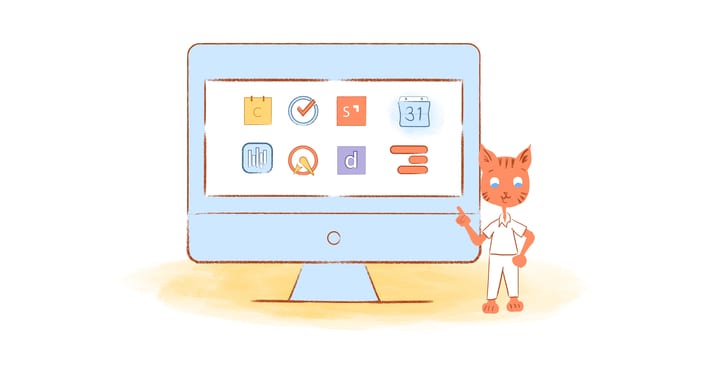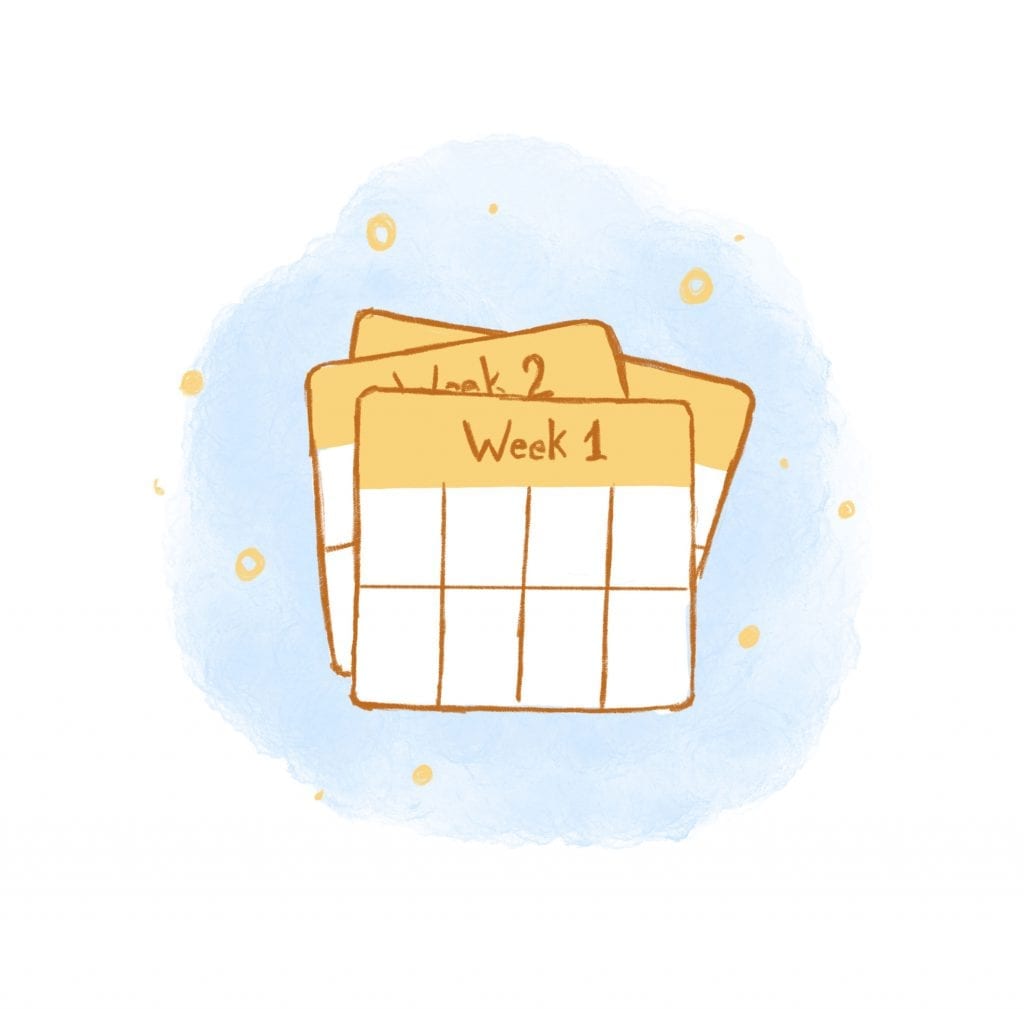

There have always been plenty of ways to increase your productivity. The key here, is that the information about productivity is always changing. You can’t pick one productive way that fits you — and then never read another article or study about productivity. There will always be another app.
You can use hacks like the Pomodoro Technique, create a daily routine, and plan your entire day. You can even ditch bad habits, such as multitasking and having too many meetings. Just remember to always have eyes and ears to newer and faster processes and tools that will help you on your way.
How fast will you become — for now — a lot faster. Later, who knows –but, you will become more and more amazing.
Another effective way to be more productive is by “embracing” new things — including scheduling apps. These handy apps eliminate those back-and-forth communications when scheduling appointments, events, and even tasks. A quick app entry will make every part of your life quicker.
The 10 Best Productivity Scheduling Apps for 2022
The problem — you may be thinking is that there are too many scheduling apps available on the market. This means that you may end-up spending too much time searching for a scheduling app that best suits your needs. To help narrow down your decision, here are the best productivity scheduling apps out there.
1. Calendar
Instead of playing phone tag or exchanging lengthy email threads, Calendar uses a smart scheduling link to essentially automate your scheduling. Simply send your availability via email or through an embedded link. The other party then picks the best date and time for them. After that — the event is added to everyone’s calendar. Literally three or four clicks. Boom! Done.
Even more promising is that Calendar uses machine learning to make suggestions for when, where and how your meetings can take place. Calendar also sends follow-ups to ensure that every attendee confirms the meeting.
You can even use the free Calendar app to help manage your team. This because the apps intelligently categorizes project meetings in order to determine the relationship between your plans and the people attending the meeting.
2. Todoist
Todoist is the perfect productivity app for scheduling tasks and reminders on your own calendar so you always know what you need to achieve each day and nothing will slip through the cracks!
The way Todoist is able to do what it does is through their many integrations. The most notable integrations are their Google and Microsoft integrations but they also integrate with several other softwares including project management tools Monday.com and Jira.
You can start using Todoist for free with their free plan. They also have two paid plans with more functionality. These include the pro plan, which is 3$ a month, and the business/ teams plan, which is 5$ a month.
3. Any.do
Any.do stores all of your todos, lists, and reminders in one convenient location. The app also comes with a calendar so that you can plan out your day, week, or month. There’s also location based reminders and how you can share your tasks and calendar with others.
As if that weren’t enough Any.do also comes with Assistant. This feature automatically analyzes all of your tasks so that it can automatically do it for you. This means if you have recurring tasks, events, or meetings Any.do Assistant will take care of it for you on it’s on.
The app syncs across all devices and plans start at just $2.09/month.
4. Notion
Notion is another app that places all of your work in dashboard. This includes everything from your calendar, lists, todos, notes, Kanban board, and spreadsheets. Like Plan, this means you and your have team have everything needed to stay on the same page without switching between applications.
Notion integrates with Google apps, Slack, Twitter, Figma, and around 50 other popular apps. However, one of the coolest features is that the interface will fade away when you start typing. That means you won’t get distracted by notifications while working.
You can try Notion for free and it works across most devices. Later you can pick the plan you want, after trying it out.
5. Doodle
Doodle has been a favorite scheduling app for years. And there’s a good reason why. It’s one of the simplest ways to find the best availability for everyone to meet — it’s also kind of fun.
Simply suggest a date and location and then invite participants to vote in a poll. When the votes are in you can then select the most popular option. Since Doodle integrates with your Google or Facebook account events are automatically synced to everyone’s calendar — even if the don’t have Doodle account.
For individual users Doodle is free. However, for teams and more robust features like reminders, you’ll have to go with a Premium account starting at $39/year.
6. Accompany
You just scheduled an appointment with a high-profile individual. You obviously want to be prepared when meeting them. This involves beefing up your knowledge regarding their company or the latest news involving them, their organization, or industry.
Instead of searching for this information yourself you can let Accompany do the legwork for you.
Containing the profiles for over 250 million people, Accompany provides a rich calendar, executive briefings, and a curated news feed. This allows you to quickly view information like quarterly reviews and professional history so that you’re completely prepared for the meeting.
While Accompany is free, it’s only available through the App Store.
7. IFTTT
IFTTT is one of the best productivity tools around. That’s because you can essentially automate everything from controlling your smart devices to scheduling social media posts to muting your phone at bedtime. For example, whenever you publish a blog post on WordPress IFTTT will automatically post it to Facebook.
There are a ton of date and time triggers that can make you productive. This includes reminding your team to submit expense reports at the end of the month through Slack, receive SMS and calendar reminders, and saying when you’re busy/available with blink (1). The possibilities are endless.
8. Acuity Scheduling
If you’re in the service industry then you definitely want to check out Acuity Scheduling. It allows clients to book appointments online so that you no longer have to deal with those back-and-forth communications. Acuity also lets clients reschedule events on their own and even pay for your services through PayPal, Square, and Stripe.
When an appointment is booked Acuity will automatically add the appointment to your Google, Outlook, iCloud or Office 365 calendar.
If you’re working solo, Acuity is free. Plans start at $15/month. Acuity is also part of our top calendar apps for business owners.
9. Setmore
Setmore is another tool that lets customers book an self-book appointments with you in real-time. Because Setmore integrates with WordPress, Wix, Weebly, and Facebook there are a variety of ways for customers to book your services. Once an booked, you, your team, and the customers will receive SMS and email reminders to help lessen no-shows.
You can also use the Android or iOS app to create recurring events, book classes, and accept online payments. For larger businesses there’s even a live call answering service — but you’ll need the $89/month plan.
10. Sling
Finally, if you have team then you’ll want to use Sling. This app will schedule your team in a matter of minutes while also eliminating conflicts by receiving real-time updates on double-booking and time off request.
You can also use Sling track your team’s hours and export these timesheets for payroll. And, you can keep communicate more effectively with your team through group messages or creating a unique newsfeed for your team.
Sling is free if you’re just looking for a tool to schedule your team, for additional features you’ll have to select a paid plan which starts at $1.75 per user.
Updated February 2022











John Rampton
John’s goal in life is to make people’s lives much more productive. Upping productivity allows us to spend more time doing the things we enjoy most. John was recently recognized by Entrepreneur Magazine as being one of the top marketers in the World. John is co-founder of Calendar.